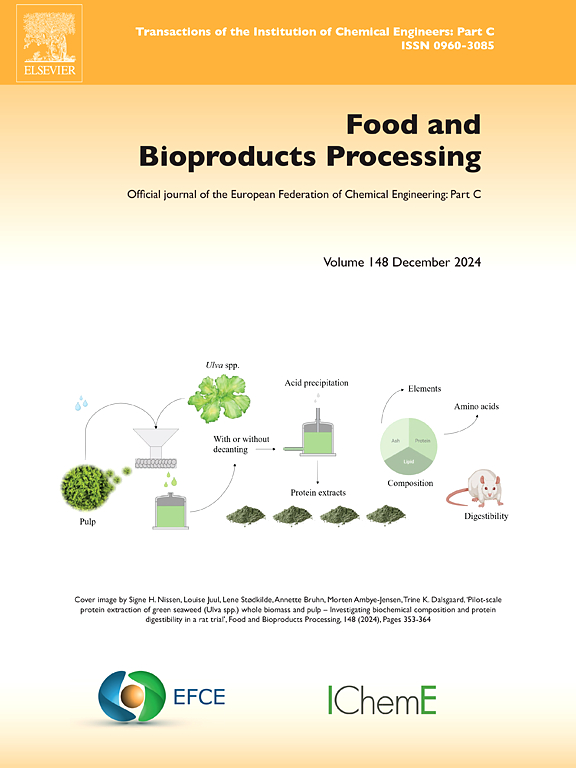可溶钾微生物的出现有助于可持续粮食生产和微生物复杂性的作物加工
IF 3.4
2区 农林科学
Q2 BIOTECHNOLOGY & APPLIED MICROBIOLOGY
引用次数: 0
摘要
不断增长的全球人口和随之而来的粮食需求激增,推动了在一个详尽的生产系统内采用高产品种。然而,这种方法导致了严重的生物和自然复杂性,包括大量使用肥料,造成关键土壤养分的枯竭和环境污染。它需要发展可持续的、生物相容的、无污染的和生态友好的农业战略,以实现更清洁的作物生产,保持一个健康的完整。在这种背景下,高效的根际微生物(ERMs),特别是钾溶性微生物(KSMs),作为解决这些复杂性的可持续和无污染的解决方案而出现。这一综合综述说明了ksm作为无化学农业的重要载体,通过有效地从不溶性成分中溶解钾,使植物获得钾,提供了一种经济可行的生态友好型生物肥料。研究表明,包括芽孢杆菌、枝孢杆菌、氨基杆菌、鞘单胞菌、肠杆菌、伯克霍尔德菌和芽孢杆菌在内的多种KSM物种都能高效地溶解钾。KSM采用多种复杂的机制,如酸解产生质子、有机/无机酸、氢离子促进的阳离子交换、螯合作用和酶降解来溶解钾,是传统化肥的绿色替代品。这在本评论中有详细介绍。这些机制在动态微生物-土壤-植物系统中作为相互联系和紧急行为运作。此外,它还揭示了现代基因组学、后基因组学和CRISPR-Cas基因组编辑工具的整合,这些工具有望揭示ksm的机制,并开发高效、可持续的钾肥。因此,正在进行必要的范式转变,以充分利用土壤微生物生物肥料(如ksm)的可持续潜力,确保采取有弹性和生态意识的可持续农业方法。本文章由计算机程序翻译,如有差异,请以英文原文为准。
Emergence of potassium solubilizing microbes-assisted crop processing for sustainable food production and microbial complexities
The escalating global population and its consequent surge in food demand have driven the adoption of high-yielding varieties within an exhaustive production system. However, this approach has led to serious biological and natural complexities, including the intensive use of fertilizers, causing the depletion of crucial soil nutrients and environmental pollution. It necessitates the development of sustainable, biocompatible, non-contaminating, and eco-friendly agricultural strategies for cleaner crop production, keeping One health intact. In this context, Efficient rhizospheric microorganisms (ERMs), specifically potassium soluble microbes (KSMs), emerge as a sustainable and non-polluting solution to these complexities. This comprehensive review illustrates the KSMs as important vectors of chemical-free farming, making K available to plants by efficiently dissolving it from insoluble components, offering an economically viable and eco-friendly biofertilizer. It illustrates the diverse array of KSM species, including Bacillus, Cladosporium, Aminobacter, Sphingomonas, Enterobacter, Burkholderia, and Paenibacillus, exhibit high efficiency in solubilizing K. Employing various complex mechanisms, such as proton production through acidolysis, organic/inorganic acids, hydrogen ion-facilitated cation-exchange, chelation, and enzyme degradation for K solubilization, KSMs represent a green alternative to conventional chemical fertilizers, which has been detailed in this review. These mechanisms operate as interconnected and emergent behaviours within dynamic microbial-soil-plant systems. Further, it sheds light on the integration of modern genomics, post-genomics, and CRISPR-Cas genome editing tools that hold promise for unravelling the mechanisms of KSMs and developing highly efficient, sustainable K fertilizers. Consequently, a necessary paradigm shift is underway to harness the full sustainable potential of soil microbial biofertilizers, such as KSMs, ensuring a resilient and eco-conscious approach to sustainable agriculture.
求助全文
通过发布文献求助,成功后即可免费获取论文全文。
去求助
来源期刊

Food and Bioproducts Processing
工程技术-工程:化工
CiteScore
9.70
自引率
4.30%
发文量
115
审稿时长
24 days
期刊介绍:
Official Journal of the European Federation of Chemical Engineering:
Part C
FBP aims to be the principal international journal for publication of high quality, original papers in the branches of engineering and science dedicated to the safe processing of biological products. It is the only journal to exploit the synergy between biotechnology, bioprocessing and food engineering.
Papers showing how research results can be used in engineering design, and accounts of experimental or theoretical research work bringing new perspectives to established principles, highlighting unsolved problems or indicating directions for future research, are particularly welcome. Contributions that deal with new developments in equipment or processes and that can be given quantitative expression are encouraged. The journal is especially interested in papers that extend the boundaries of food and bioproducts processing.
The journal has a strong emphasis on the interface between engineering and food or bioproducts. Papers that are not likely to be published are those:
• Primarily concerned with food formulation
• That use experimental design techniques to obtain response surfaces but gain little insight from them
• That are empirical and ignore established mechanistic models, e.g., empirical drying curves
• That are primarily concerned about sensory evaluation and colour
• Concern the extraction, encapsulation and/or antioxidant activity of a specific biological material without providing insight that could be applied to a similar but different material,
• Containing only chemical analyses of biological materials.
 求助内容:
求助内容: 应助结果提醒方式:
应助结果提醒方式:


